11 Hacks to Prevent Fountain Pens from Drying Out
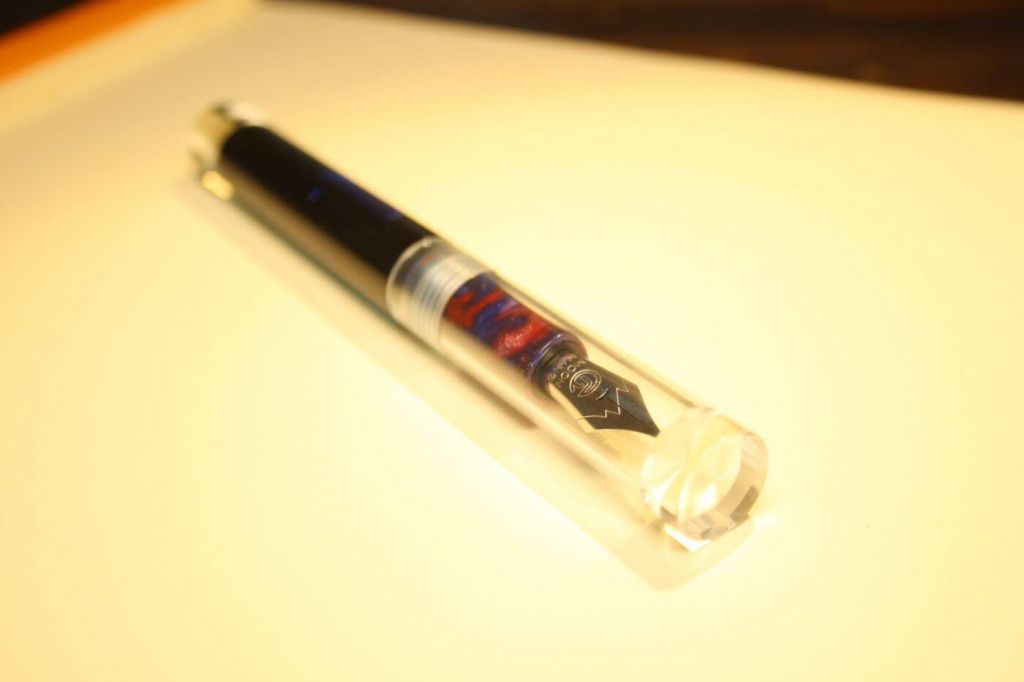
If your fountain pen is constantly drying out, there is an underlying problem you need to fix. Here are my 9 ninja tips I've learned after a couple of years of fountain pen use.
How to prevent fountain pens from drying out:
Below I'll go over each tip in detail. First, I want to quickly touch on how to know what problem you're actually dealing with.
Diagnosing the problem correctly
Before moving on, we want to correctly diagnose the problem. Once you get comfortable using fountain pens, it gets easier to diagnose any problems more easily, and prevent them entirely in the future.
After a couple of years of experience, I now have multiple pens that always write, start immediately, contain the perfect ink, and never leak.
In most cases, we're dealing with one of two problems.
- Your pen dries out within minutes while writing
- Your pen dries out when capped after a couple of days
If you know what your pen does, you're halfway there. Either your pen just needs a good clean, or it is something else. The first problem is typically a clogged feed, which is easy to fix. The second problem can be caused by multiple problems, so you might need to try a few, but we will figure it out eventually.
Modern Parkers are known to dry out, mostly because they have a breather hole the size of my thumb, so I've written a separate article on those. If you have a Parker, read this article on how to fix it.
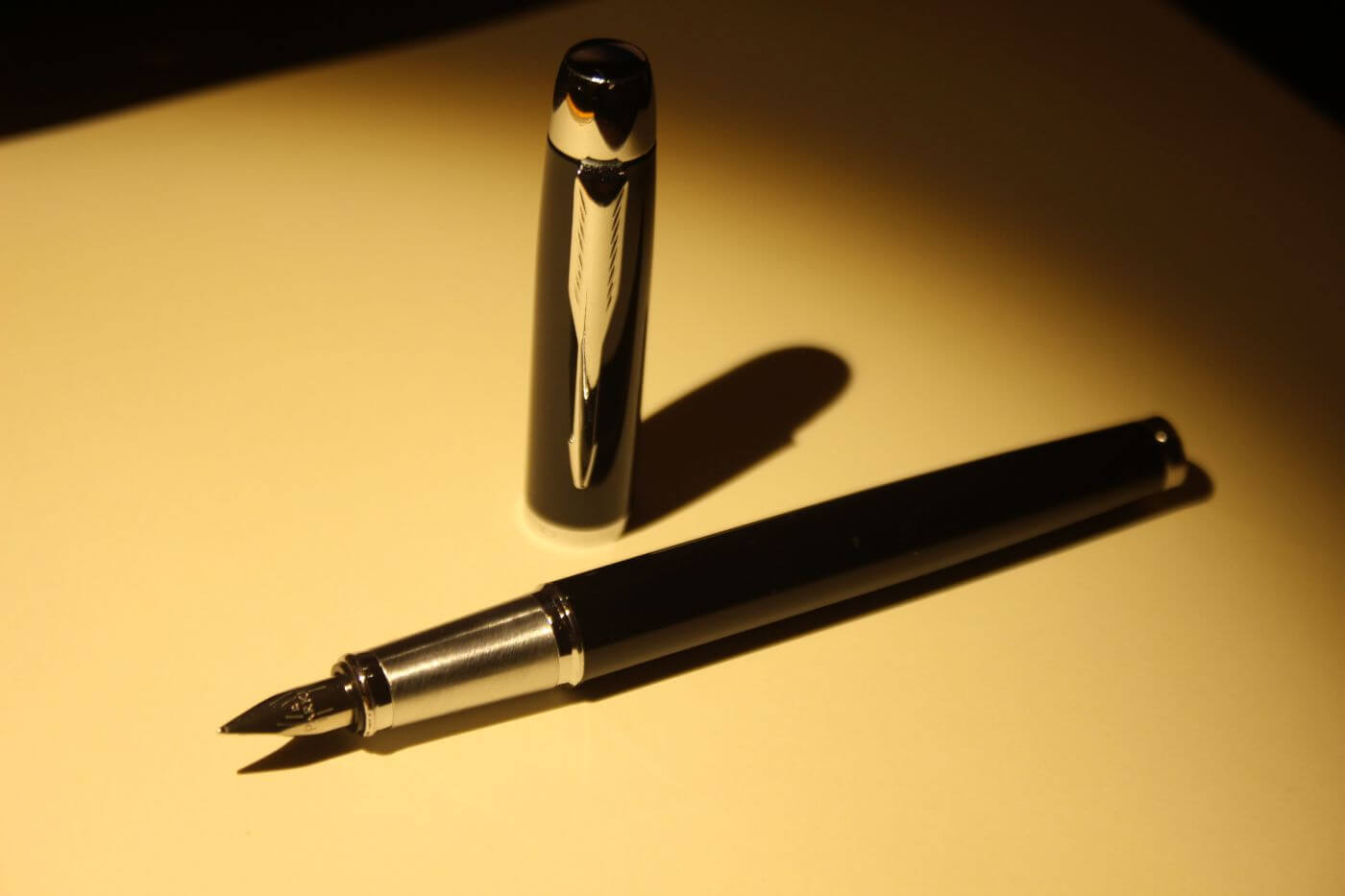
Why do fountain pens dry out?
Fountain pens dry out because the water content of the ink evaporates over time. The most common issues that result in a dry fountain pen are: an improperly sealing cap; a clogged feed; improper storage; using an ink that's too thick; or the climate is too dry.
Now, let's dive in and go over each solution in more detail.
Clean the pen
I start out with this one since it's a common problem and it took me four years to figure this one out. Fountain pens need to be cleaned now and then, or the feed will get clogged with dust, pigment, and particles.
If the pen dries out while you're writing, or after a couple of hours after re-inking, you probably have a clogged up feed. But even if it takes days while capped, it could still mean you simply need to clean your pen.
If you're using cartridges instead of bottled ink, this is very likely your problem.
Luckily, cleaning fountain pens is pretty easy. You simply flush the nib and feed under the tap, and if that doesn't fix your problem, let it soak in some (distilled) water overnight.
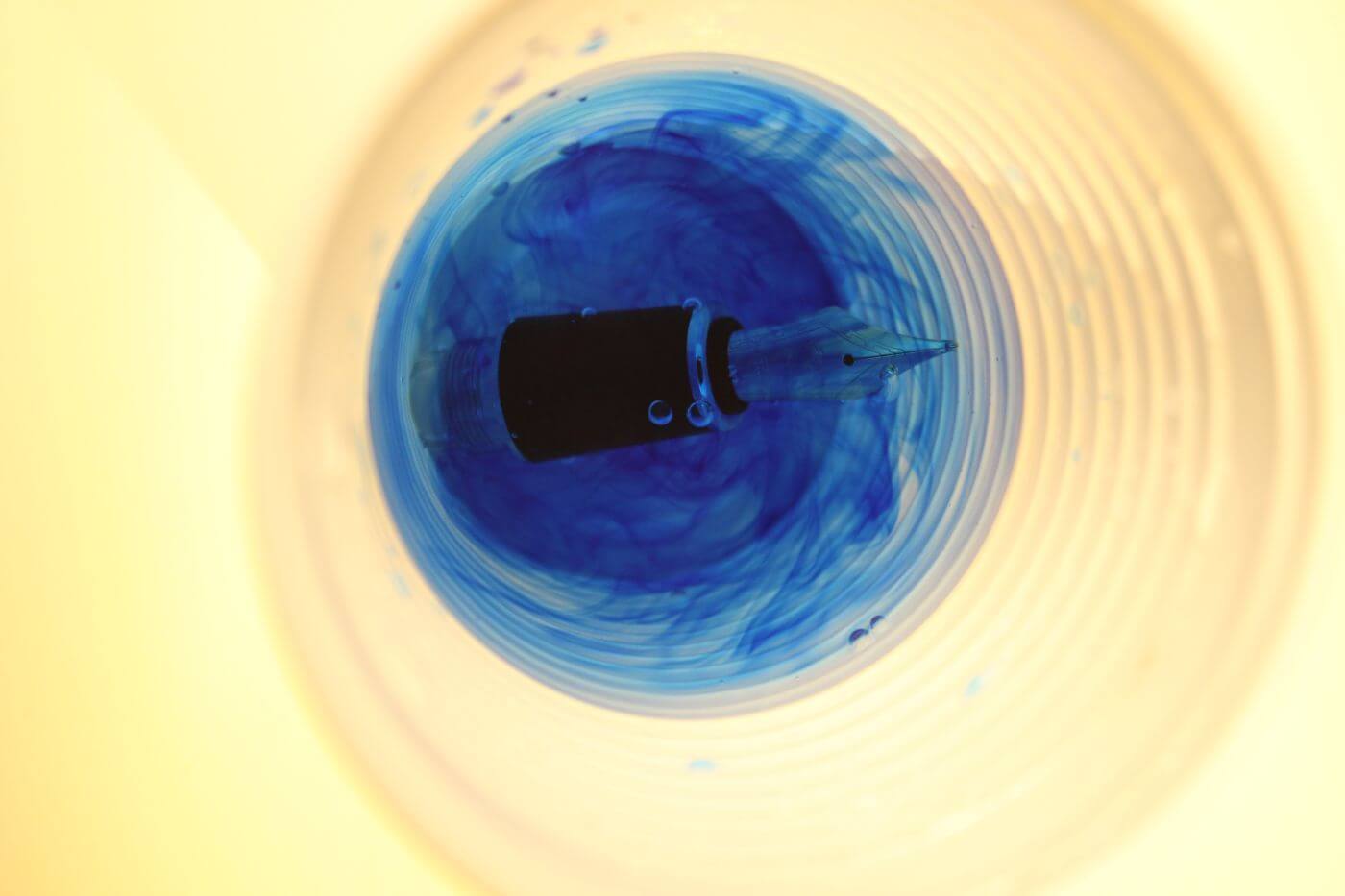
I will probably write an article on how to flush your fountain pen step by step, but there's really nothing more to it.
I always recommend trying this first, since flushing your pen is free, easy, and fast, and will most likely fix all your problems.
If you think your problem is a clogged feed but the problem remains after soaking the feed overnight, you might want to use pen flush. Read how you can easily make your own pen safe-to-use flush for just $2.
Dip the nib in water
This is an instant solution which won't fix the underlying problem, but it does work most of the times. Simply dip your nib in some water before you start writing. Wipe it off with a paper towel. This is called 'priming the nib': you suck down some ink through the feed before you start writing.
A good fountain pen that is well-maintained shouldn't need to be primed, but if you do, it will work in most cases.
There are other ways of priming your nib; the easiest is to squeeze your cartridge. I won't go into detail here since it's outside the scope of this article. We want to prevent a dried out pen, not fix it. But I thought I'd mention it briefly.
Store your pens horizontally or cap down
In order to prevent a fountain pen from drying out, you want to keep the nib and feed wet. The easiest way to keep them wet is to make sure you store them properly. You shouldn't keep your fountain pens stored upright in a pen cup, like a ballpoint pen. Instead, you want to store them horizontally, on your desk, for example, or, if you insist on using your pen cup, with the cap facing down.
Here is how I store my pens, in a wool sleeve my fiancee knitted for me:
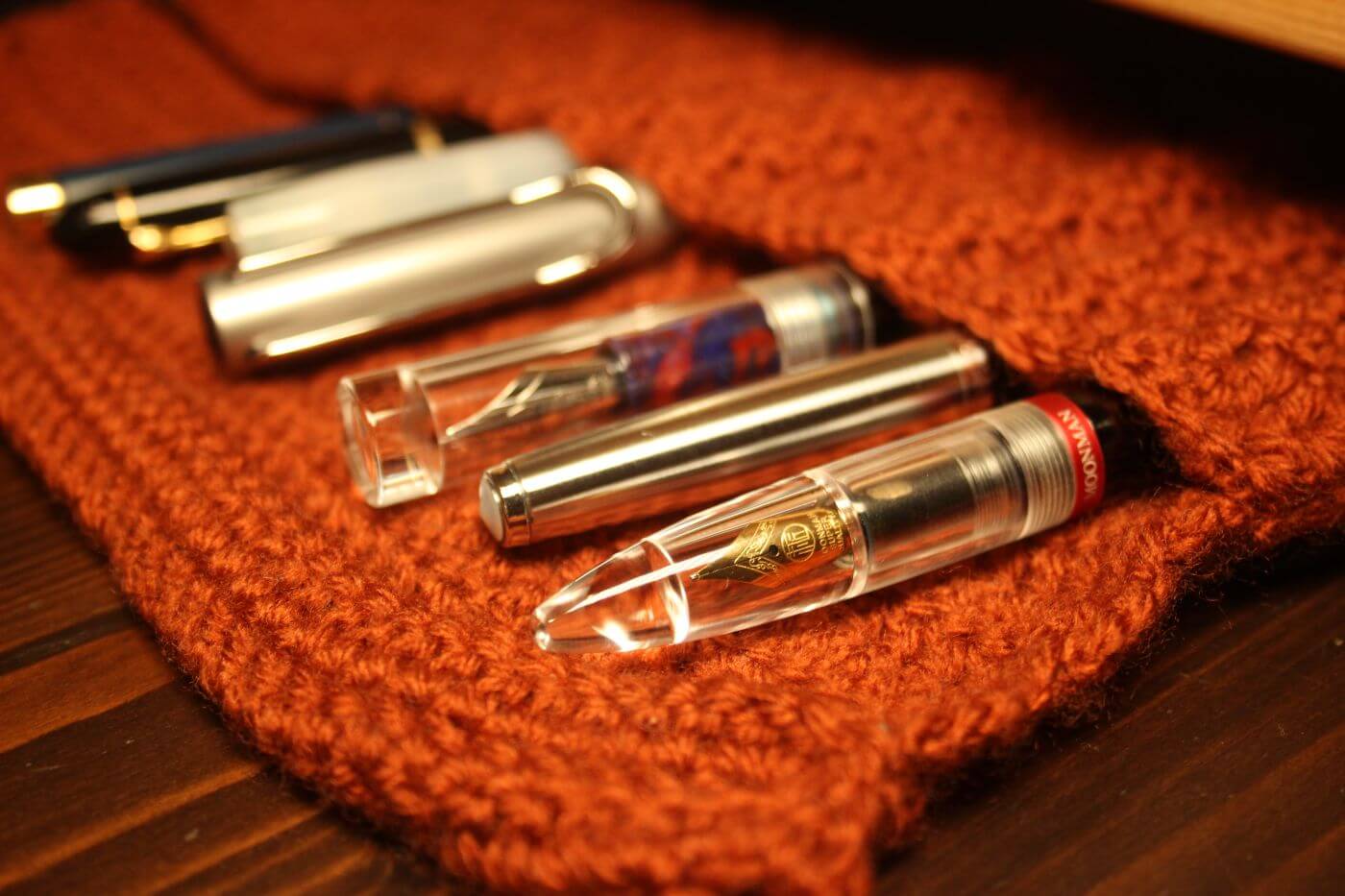
Use a closed storage container
Another storage solution is to store your pens in a closed container, like a Rubbermaid or Tupperware container. The reason fountain pens dry out is that the water content of the ink evaporates. Closing off your fountain pens to air will fix this problem.
Most people don't need to do this, and I'm happy I don't because I rather like my storage at the moment, but if you can find a nice looking box, it's a solid long-term fix.
Move the storage location
Dry air is your fountain pen's enemy. In some cases, there is dry air running through or around your storage location. Dry air will dry out fountain pens.
Common sources are a PC cooling fan or a radiator. If you store your pens near one of those, even in a drawer, it could be the reason they dry out. I recommend moving the pens for a couple of days to a different place. If, after a couple of days, the problem remains, it is most likely something else.
Get a humidifier
If you live in a particularly dry climate, sub-tropic, desert, or generally anything in between 35°N and 35°S, you might need to get a humidifier. Fountain pens are known to dry out in very dry climates. Again: dry air is your fountain pen's enemy. Running a humidifier in your office (or wherever you store your pens) will probably fix the problem forever.
Find the right ink for your pen
No one fountain pen is the same. Some run drier than others. Luckily, no one fountain pen ink is the same either, and you can compensate for a dry fountain pen by getting a wetter ink. It always takes me some time to find the right ink for each pen, but it is oddly satisfying when I do eventually find it. Some inks work wonders in one pen and mess up the ink flow in another. Generally, I have no idea why, but I did found some rules of thumb:
- More saturated inks are generally thicker
- Sheen or glitter inks are generally thicker
- Blues and greens are generally thinner
- Japanese inks are generally thinner
- Fine nibs tend to like wetter inks
- Medium and broad nibs tend to like thicker inks
If you want to try some nice thin inks that still have great color, try one of the following brands:
Popular wet inks:
- Pelikan Edelstein collection
- Pilot Iroshizuku
- Diamine Basic inks
- Noodler's
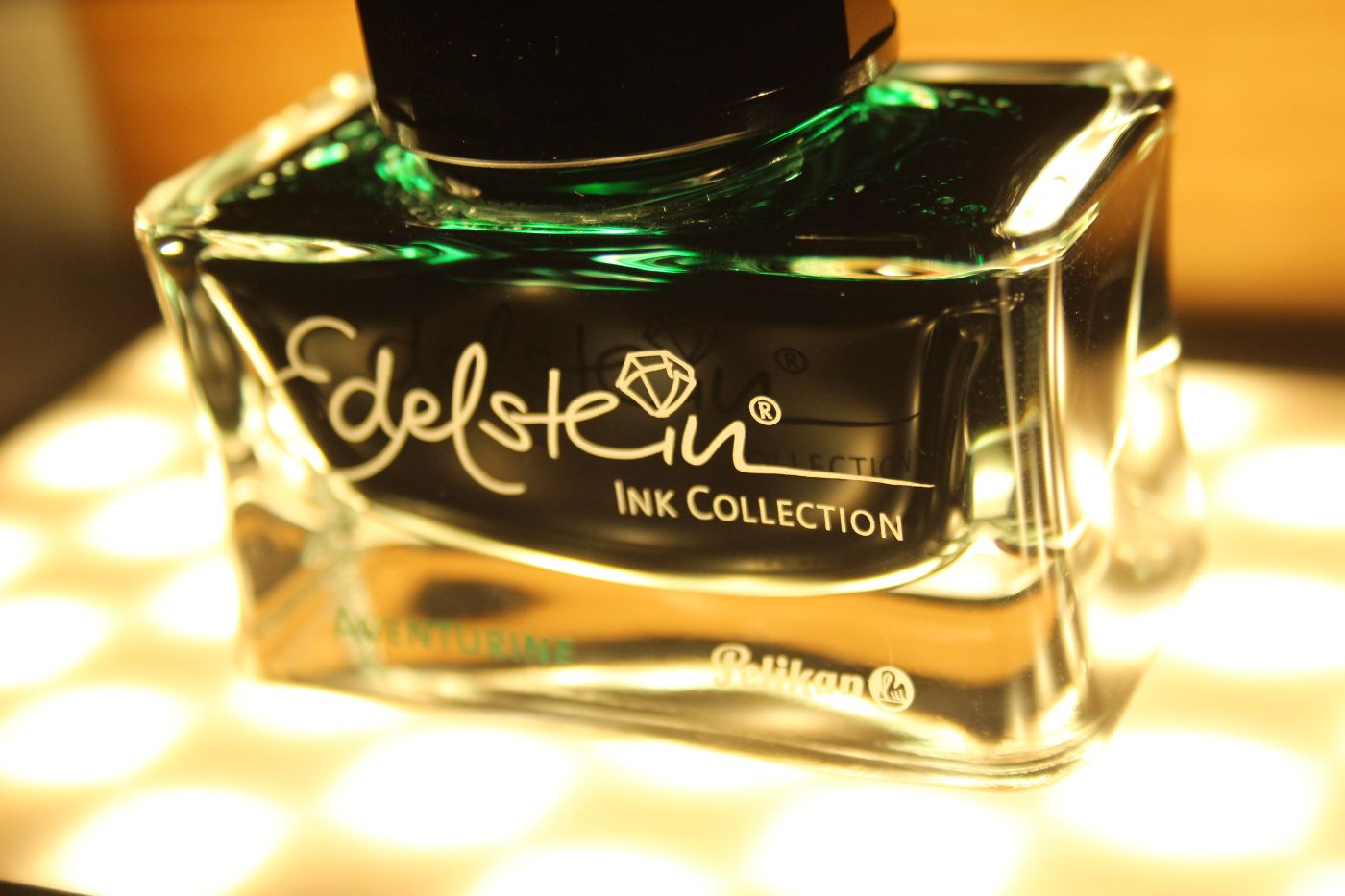
Try a lubricated ink
Some inks contain lubrication to make them write more smoothly. This is especially great for drier, finer nibs. For example, my Wing Sung 601 has a nib with a bit of feedback, and it's a bit rough on the edges. Using Diamine Majestic Blue in that one made it write 100% better.
Popular lubricated inks:
- Aurora Black - a go-to black ink for fountain pen enthusiasts
- Lamy Obsidian
- Monteverde (all lubricated)
Noodler's Eel Series is meant to lubricate pen pistons and so on, or so I've heard. They don't write any smoother than regular inks.
Tape off the breather hole
Alright, I have to admit that I'm a bit confused. Some pens have a breather hole on the cap, and some don't. I've read that these breather holes are on European pens due to safety regulations (to prevent your child from suffocation), but I've also read that they are on pens to release condensation. I have found a breather hole on my 70-year old Union pen, way before governments regulated the fountain pen oligarchs. It's also a lot smaller than the gigantic sinkhole on my Parker IM, which is another indication it is there for another reason, perhaps. My guess is that the truth lies somewhere in the middle.
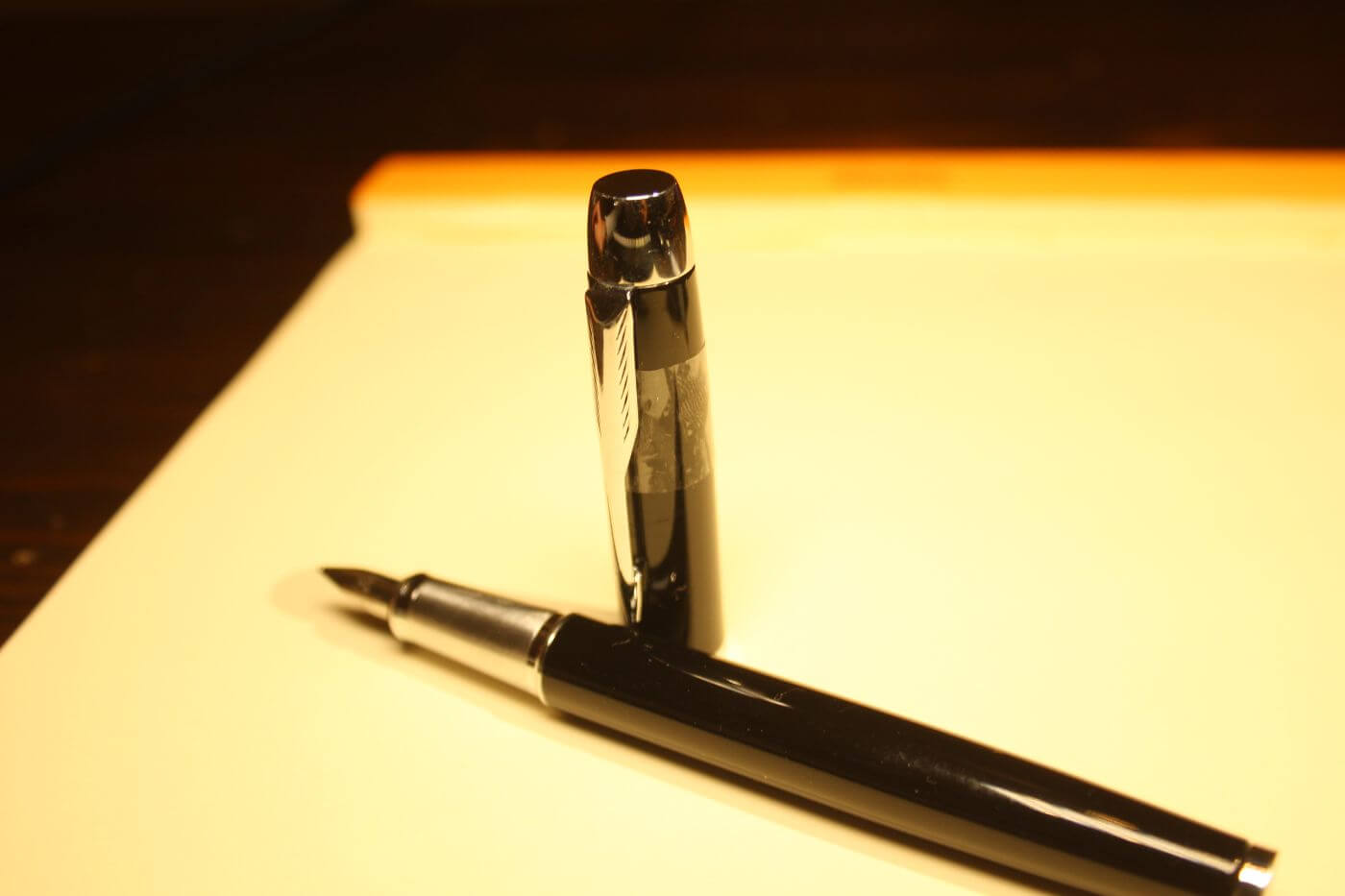
Whatever the reason for these breather holes, some pens have 'em, and they can dry out your pen, especially when they are large. Try taping them off to see if that fixes your problem. They are generally under the clip on the cap. You can check whether your pen has one by holding the cap against the light, blowing on it, or holding it underwater (cap up) and checking for bubbles. If taping it off fixes your problem, seal it off more elegantly, using some hot wax for example.
Spread the tines of your nib
Some pen nibs are simply misaligned, even new ones. If the tines of your nib are too close together, they won't let any ink out. You can spread the tines by gently pressing the nib against your fingernail. This makes the nib wetter, but it will only work if done correctly and if there are no other underlying problems, so use this as a last resort. Always inspect the nib closely before making any adjustments.
Proceed with caution: you will alter the nib permanently, and you could very well ruin your nib forever.
Get a wetter pen
If you continue to have trouble, you might want to try a different pen. In some climates, some pens work while others just won't. Here are some tips to get you on your way.
Generally, Western pens are wetter than Asian brands. Some European brands are even wetter. Try a Lamy; they are generally pretty wet and keep wet for a long time in my experience.
You could also try a Slip and Seal cap pen, like the Platinum 3776 Century (I'm considering one). I believe the Slip and Seal cap is patented by Platinum, but there are other brands that use similar designs. It is basically an inner cap that seals of around the nib, keeping it wet for years. The Platinum Preppy uses it as well, which is a super cheap pen, so you could try that out before moving on to the more expensive pens.
In conclusion
Continuously fixing a dry fountain pen can be an annoyance. I know from first-hand experience. Luckily, for 99% of all cases, one of the above solutions will solve the issue, and if it doesn't, you can consider getting a new pen. I suggest trying a Platinum Preppy, just to verify that a sealed off cap will fix your problem, before moving on to Platinum's more expensive line.
Did you find the answer to your specific question?
👍 70 👎 7
Comments
Gisela
Hi Shawn! I have an issue with a new Cars d’Ache 849 fountain pen. I’m using a same brand orange color ink and i don’t like the way it writes. It’s too dry and it seems that the flow is not quite right. I haven’t tried a different ink or color yet. Have you ever heard of other users with this same issue?
Ricardo Moore
Excellent advice very entertaining and well written I hope to read more. Ilove fountain pens and would like to learn everything their is to know about them. Thank you for this article. Ricardo Moore.
Joseph G Malpeli
I keep my Lamy fountain pen in an aluminum cigar tube with a screw cap. A damp cotton ball in the tube prevents the pen from drying out, and the tube is the perfect shape and size for storing my pen. It’s important that the tube is good quality with nicely machined threads in order to get a tight seal.
Leave a comment